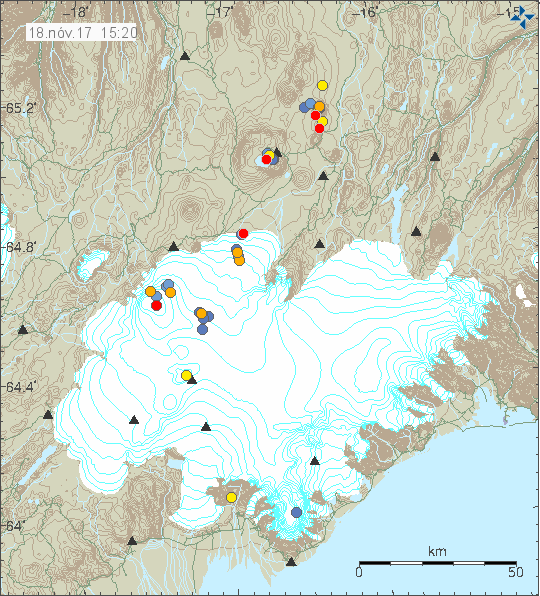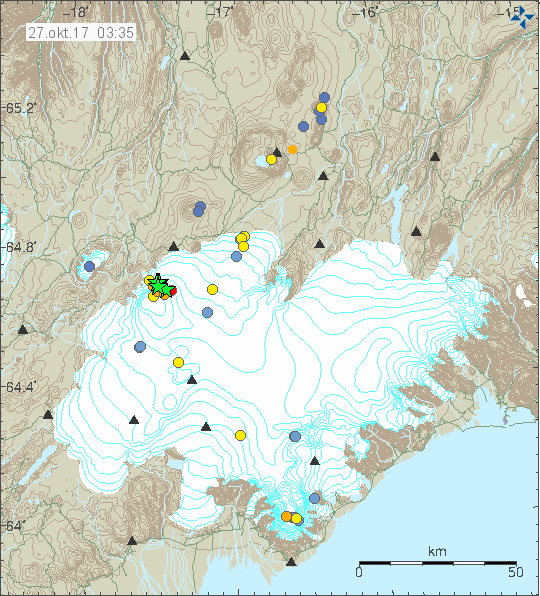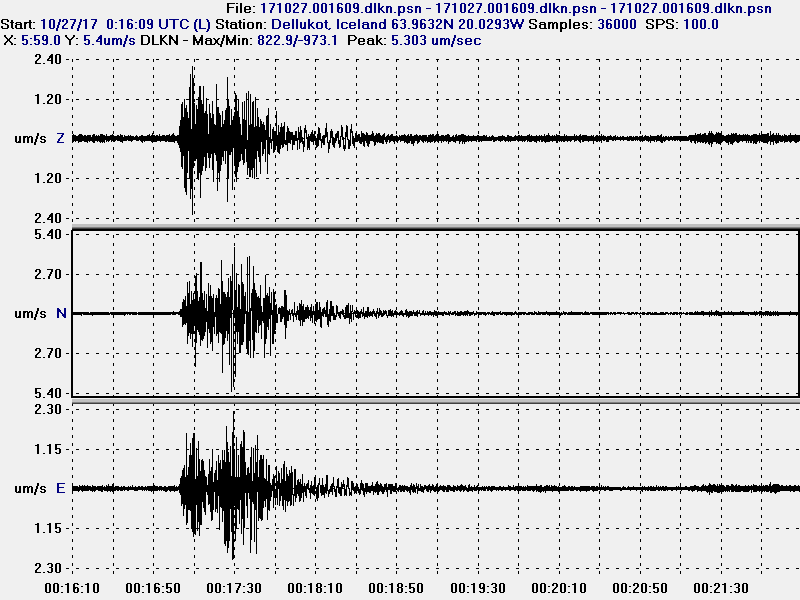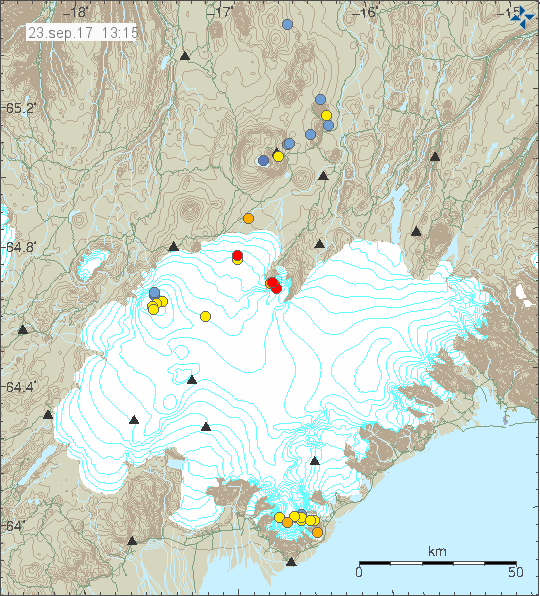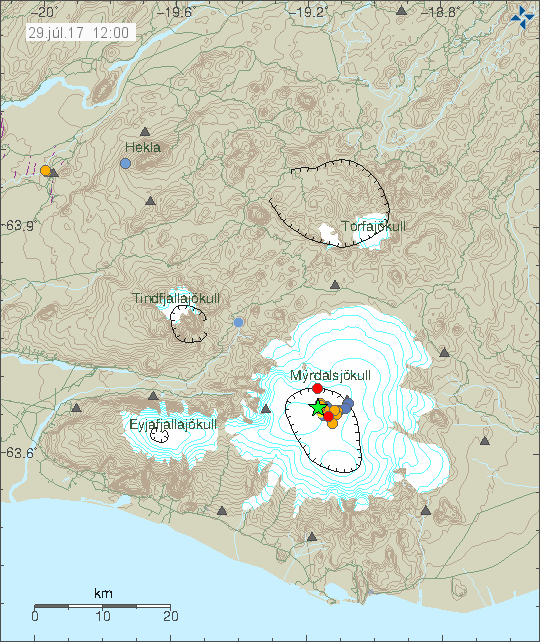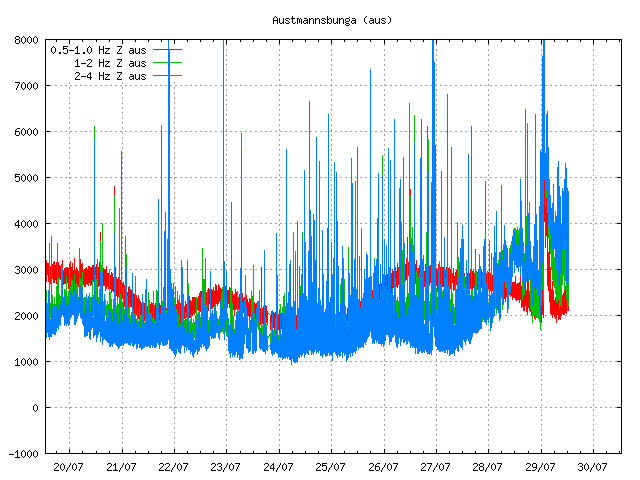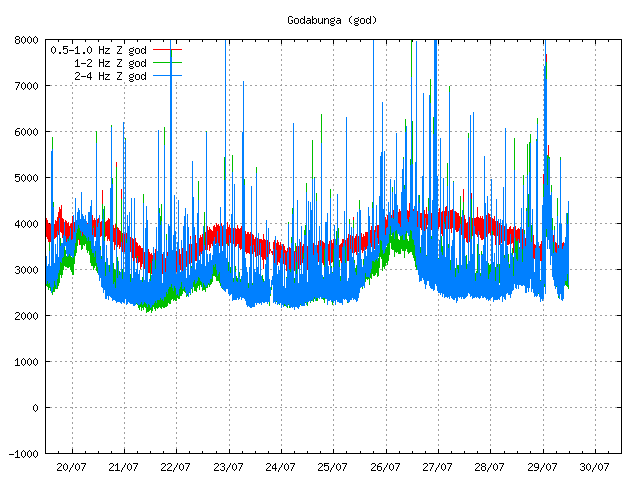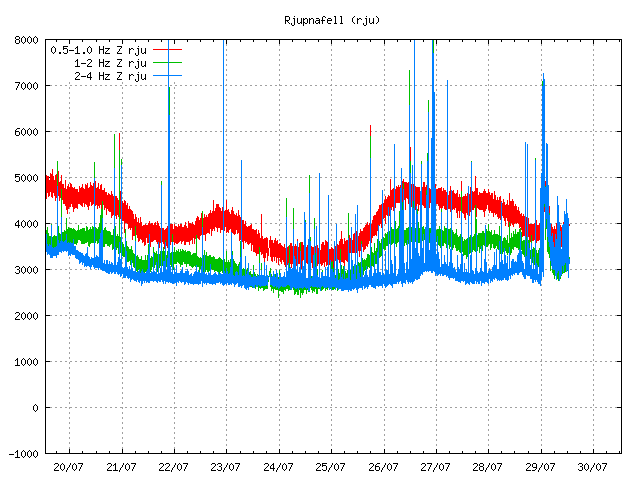Recent measurement of Öræfajökull volcano have confirmed a dyke intrusion, the dyke intrusion is located in south part of Öræfajökull volcano and that area is showing inflation. At the moment the amount of magma is now estimated at being close to the total of what erupted in 2010 eruption of Eyjafjallajökull volcano. At the moment the dyke is at depth of 2 – 6 km and that explains current hydrothermal activity in Öræfajökull volcano and why it is increasing. How long this is going to go on is not known at the moment. Öræfajökull volcano is a stratovolcano with everything that comes with it (information about this type of voclano can be found here and here).
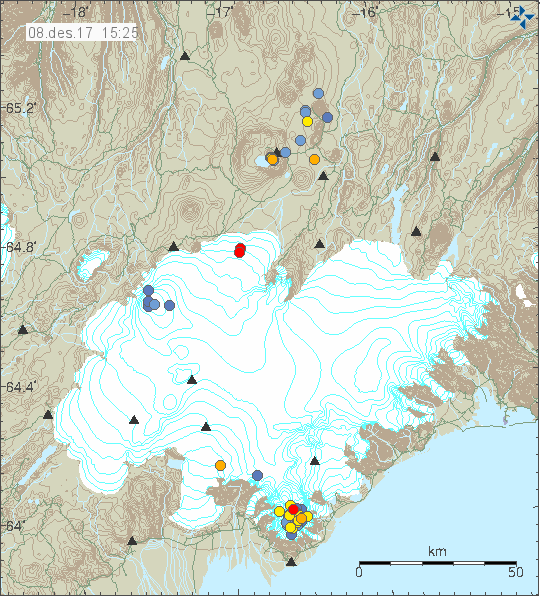
The earthquake activity in Örfæajökull volcano for the last 48 hours. Copyright of this image belongs to Icelandic Met Office.
Last week total of 160 earthquakes where recorded in Öræfajökull volcano and that is a first time record for Öræfajökull volcano having this many earthquakes since recording of earthquakes started in Öræfajökull volcano (~1995?). Earthquake activity seems to be stable at the moment, when that changes is impossible to know at the moment.
Web cameras
There are now two web cameras. The websites are based on non-dynamic folder settings so this links are going to expire rather quickly.
Fagurhólsmýri web camera (only valid for now)
Web camera bridge (only valid for now)
Donations
Please remember to support my work with donations. It helps me greatly. Thanks for the support. 🙂

